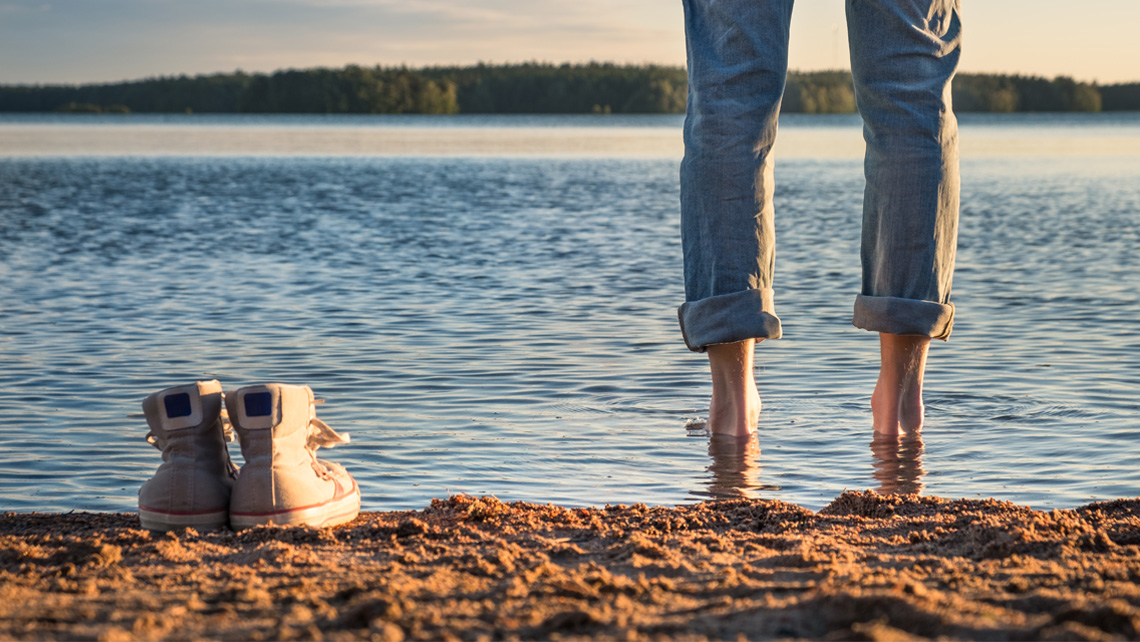Although Finland is known as the land of a thousand lakes, the real number is closer to 188,000. From the greater Helsinki area in the south right the way up to Lapland in the north, summer cottages with their sauna buildings and swimming jetties dot the shorelines. Yet even among these clean, tranquil oases there can be something sinister lurking just below the surface.
A disruption to nature’s delicate balance
The problem is one of nutrition – too much of it to be precise. When lake waters become over-enriched with nutrients, phosphorus in particular, it can lead to a phenomenon known as eutrophication, where an undesirable explosion of organisms results in oxygen depletion that can radically affect the ecosystem. One of the most visible effects of eutrophication is blooms of blue-green algae that look like pea soup smell foul. They can also cause for example skin irritation and gastro-intestinal problems for swimmers.
The main culprit is agriculture, but municipal wastewater plants, industrial sites, forestry, and fish farming are also significant sources of the excess nutrients that end up in lake waters. Although the effects of eutrophication can be severe, it doesn’t have to be a death sentence for a lake.
Prevention is better than cure
The focus should first and foremost be on preventive methods – in other words, stopping the nutrient pollution from ever reaching the lake in the first place. Effective treatment of wastewater plays a key role in this regard.
There are three main methods currently in use to begin the cleanup process. The first is dredging, where the nutrient-rich sediments at the bottom of the lake are dug out in order to reduce the nutrient loading. This method can be both time-consuming and expensive, and the dredged sediment need to be disposed of somewhere.
The second option is aeration, which aims to raise the oxygen levels in the lake and therefore the levels of the beneficial aerobic bacteria that consume nutrients like phosphorus and nitrogen. While this method may benefit conditions in the lake temporarily, it does not provide a permanent solution as it does not address the source of the problem.
The third method, and one that has transformed the fortunes of two Finnish lakes, Lake Littoinen and Lake Nälkämölampi, is restoration using iron and aluminum salts – an approach that has been successfully applied to around 50 other lakes in Finland since the 1970s. Aluminum has been used to help purify drinking water for over 200 years and is the most abundant metal in the Earth’s crust. In lake restoration it is used in the form of polyaluminum chloride and has been used to successfully treat lakes in places such as Germany, Denmark, and Sweden.
Far from simply throwing tons of this material into the lake and waiting to see what happens, this method of restoration is based on careful planning and exact calculations to ensure the best possible outcome. Modern sonar technology is used to map the shape of the bottom of the lake and estimate how much water it holds. In the case of the two Finnish lakes Kemira experts also conducted multiple tests to accurately measure the pH of the lake water in order to determine the optimal dosage. After-care is just as important as proper preparation, with careful management efforts needed to ensure that things stay on the right track in the long term.
Both Lake Littoinen in western Finland and Lake Nälkämölampi in the north east of the country were suffering from the effects of eutrophication, with murky waters and foul-smelling algal blooms having turned the lakes into no-go areas. But the introduction of polyaluminum chloride supplied by Kemira worked its magic.
Results that are clear for all to see
The change in both lakes was dramatic. Previously murky waters with little to no underwater visibility have been transformed by chemical treatment. In the case of Lake Littoinen, the waters were noticeably clearer just a few hours after applying the polyaluminum chloride, while the bottom of Lake Nälkämölampi was visible from the surface for the first time in decades. This is great news for both lakes, ensuring that they can be enjoyed by the next generation of eager fishermen and bathers just as they were by their grandparents.

